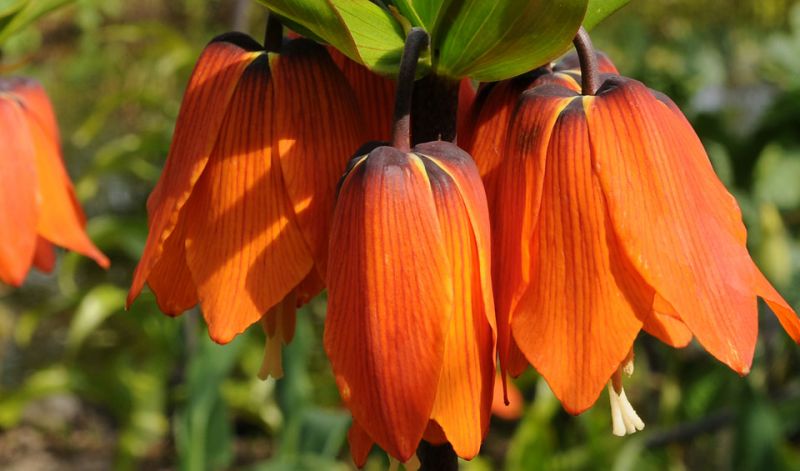Fritillaria imperialis
("Crown Imperial")

By far the most well-known species. It is also one of the earliest plants to be cultivated: illustrations of it date back to 1610! The bulbs have an unpleasant (skunky) smell and are an excellent deterent against rodents & critters. The otherwise spectacular flowers also emit a distinct musk-like odor and contain large drops of nectar. In proper conditions, specimens will often continue to flower year after year in the same location. However if a stem emerges but fails to bloom, plant new bulbs in another location, preferably among ground cover plants.
What You Need To Know Before You Plant:
When Will This Flower Bloom?
Mid-Late Spring
When Should I Buy and Plant These Bulbs?
Fall
What Kind of Light Does This Bulb Prefer?
Full sun to partial shade (some shade is particularly important in warmer climate zones)
What Color Will the Flower Be?
Yellow, orange-red or red
How Far Apart Should I Plant These Bulbs?
8 in / 20 cm
How Deep Should I Dig?
8 in / 20 cm
How Tall Will It Grow?
40-44 in / 100-110 cm
Recommended Number of Bulbs Per Square Foot?
1
Is It Deer/Critter Resistant?
Yes
How Can I Best Use It in My Landscaping?
In flower- and perennial beds and borders.
What Should I Do After Flowering?
Apply some granular bulb fertilizer in early Spring just as growth starts and. After blooming remove the flower heads but leave the foliage to die back naturally and again add a bit of bulb food. Leave the bulbs in the ground since they usually flower even better in the second year. When the clump has stopped producing blooms after several years, do divide them. The best time to do this is after the foliage has almost completely died down. Replant quickly.
Other Popular Varieties
'Aurora' (orange-red), 'Lutea' (bright yellow), 'Lutea Maxima' (yellow), 'Rubra' (deep vermillion red) and 'Rubra Maxima' (very large deep vermillion-red)
About the Family
Fritillaria Family
Fritillaria is a genus that consists of about 100 species. They are native to the temperate regions of the Northern hemisphere. The name is derived from the Latin name for a dice-box (fritillus) and probably refers to the checkered pattern, quite often of chocolate brown and greenish-yellow, that is common in the flowers of many species.
Read More About the Family


